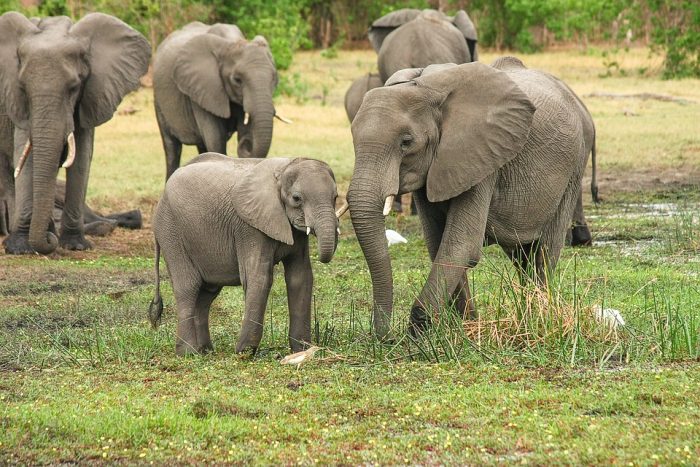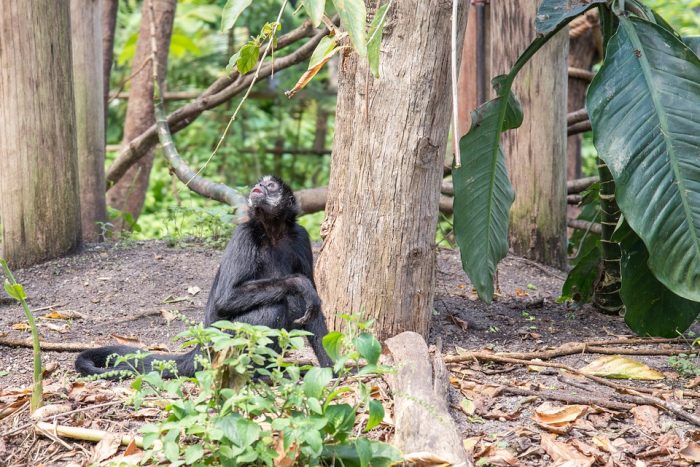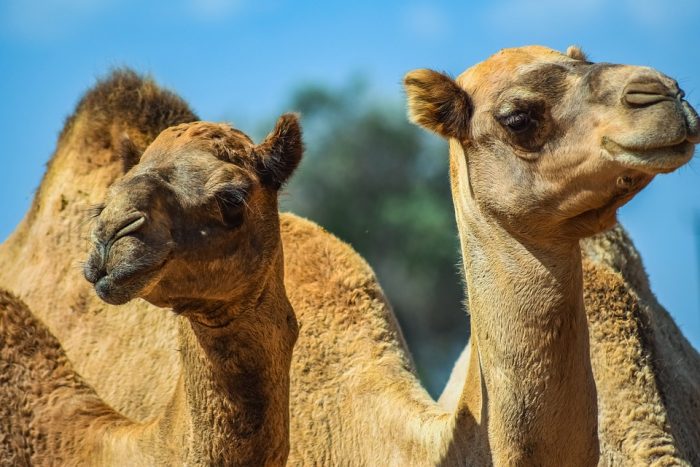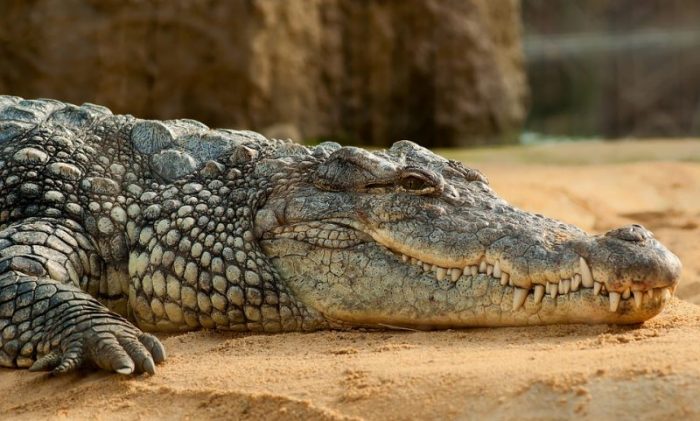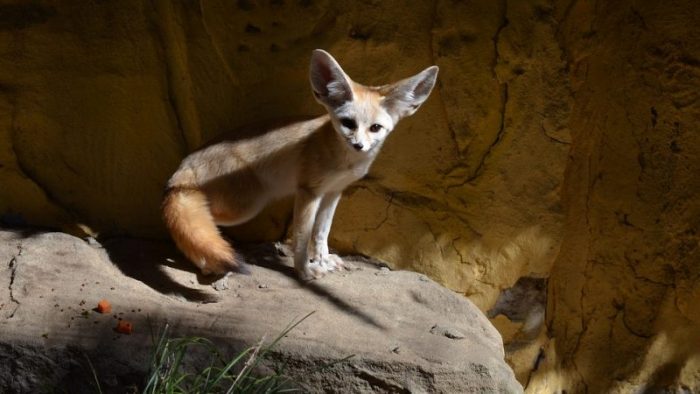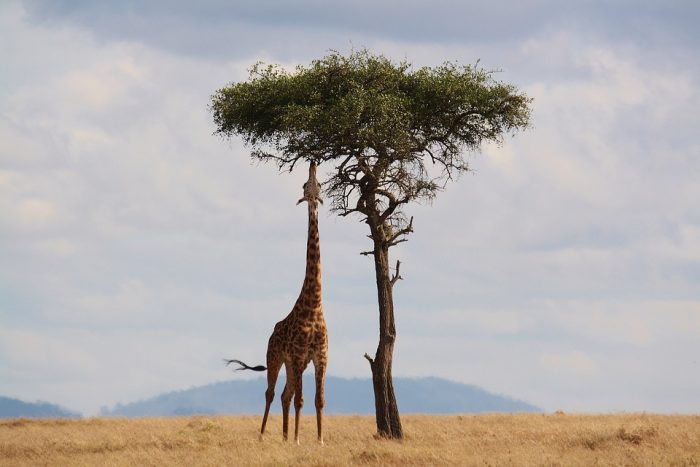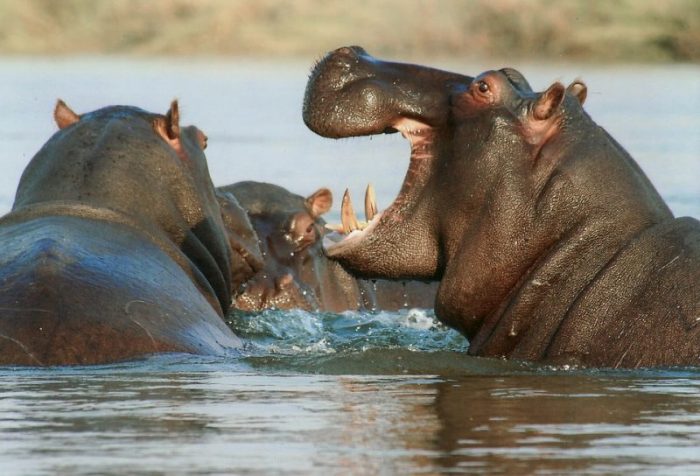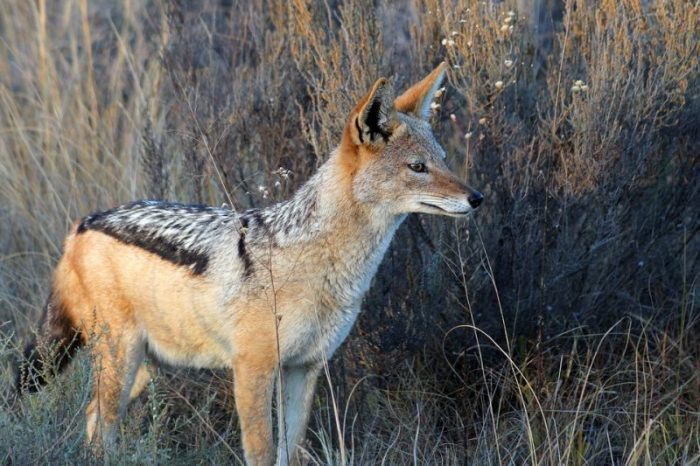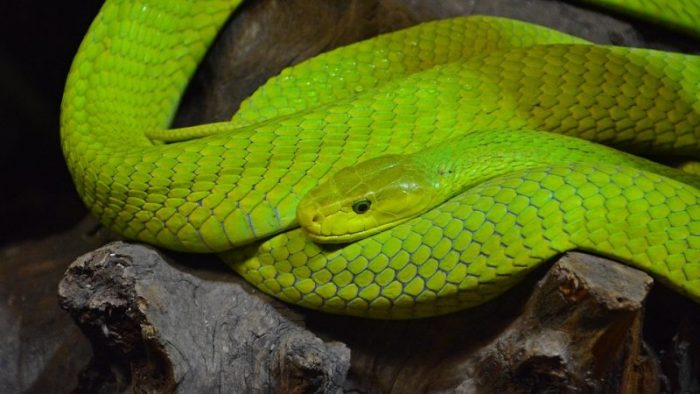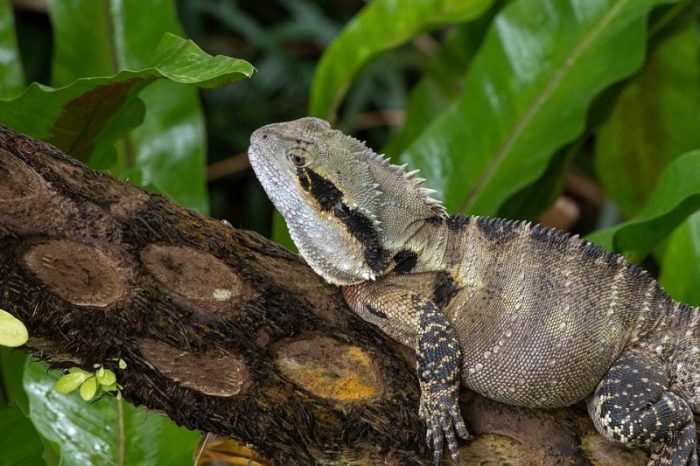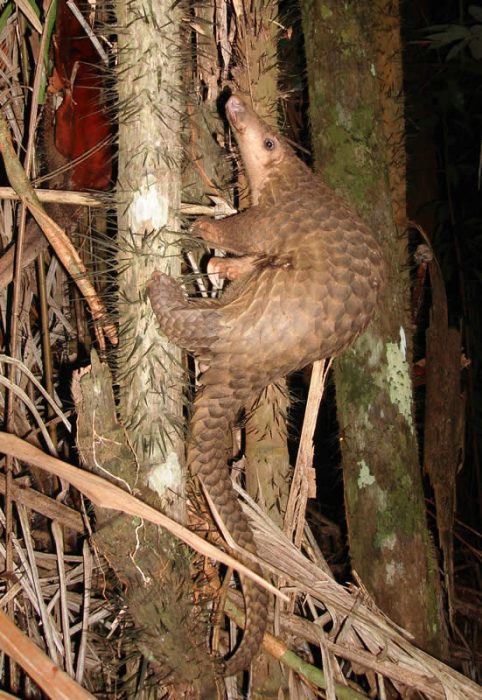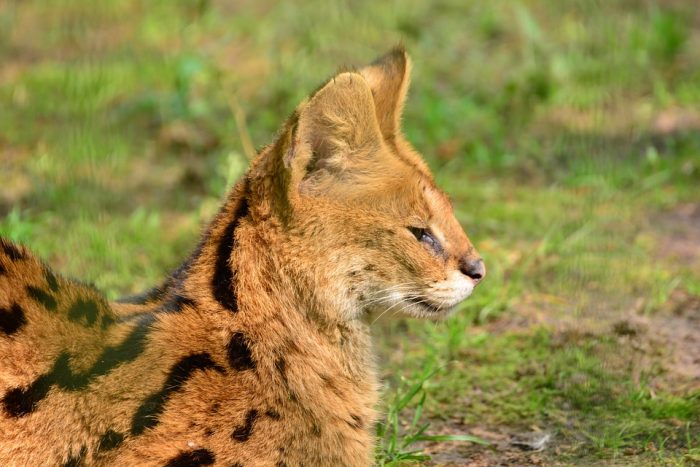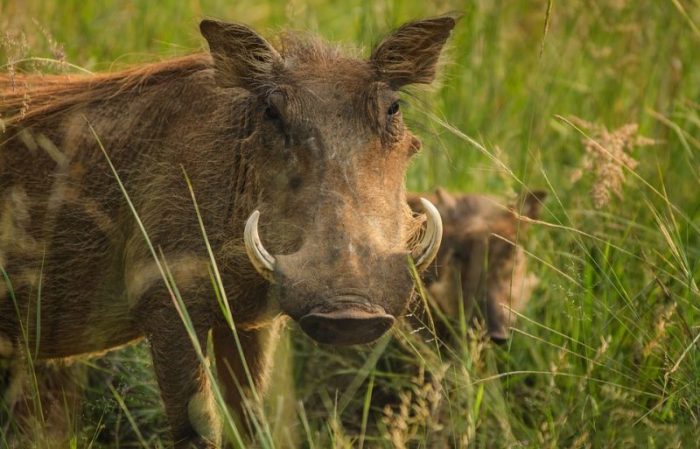
Africa is home to many fascinating animals that live in a variety of different biomes like deserts and savannas. Read on to learn more about the different kinds of animals that inhabit the continent of Africa.
Aardvark
Aardvarks are medium-sized burrowing animals found throughout most of sub-saharan Africa. The aardvark has a large range, which covers approximately two-thirds of the entire continent. Aardvarks are nocturnal and they use their long snout (shaped similar to a pig snout) to sniff for their favorite foods, which are insects like ants and termites. Once ants/termites have been located, the aardvark can dig them out of the ground with its strong legs and claws.
African Elephant
Though many people divide elephants into African and Indian elephants, there are actually two distinct extant species of African elephants: the African bush elephant and the African forest elephant (smaller than the bush elephant). The African bush elephant is the largest terrestrial animal (the third largest is the African forest elephant). Elephants usually live in family units of around ten individuals, and they subsist on foliage from trees. African elephants have to eat around 450 kg of plant material every day.
Bonobo
Bonobos, sometimes called pygmy chimpanzees, are apes found living within the Congo Basin in Central Africa. Bonobos are highly social animals, researchers say that bonobos frequently display empathy for one another, and are thought to show less aggression on average than chimpanzees. Along with chimpanzees, bonobos are humanity’s closest relatives on the evolutionary tree. Bonobos feed primarily on fruit and leaves, but they also eat meat from small invertebrates and vertebrates.
Camel
Camels are ungulates found in the Horn of Africa. Camels store fat and nutrients in the humps on their back, and there are both one hump (dromedary) and two hump species of camels (Bactrian camels). Camels are incredibly hardy animals capable of withstanding temperatures that would kill many other animals. Camels can eat many different kinds of vegetation, including dry plants and thorny plants. The world’s largest population of camels is found in Somalia.
Crocodile
Crocodiles are large reptiles found around the world with the primary type of crocodile in Africa being C. niloticus, the Nile Crocodile. It is thought that the Nile crocodile is the second-largest reptile in the world, and it is the apex predator of its range. The Nile crocodile is capable of eating just about anything, including various kinds of fish, birds, mammals, and reptiles. The Nile crocodile is capable of lying in wait for days on end for the right moment to attack prey.
Fennec Fox
Fennec foxes are small nocturnal animals that inhabit the Sahara desert. Fennec foxes are known for their large ears, and the increased surface area of their ears allows them to dissipate heat more effectively. The fox hunts for food at night, subsisting on insects, rodents, eggs, birds, and small mammals like rabbits. Their ears are also believed to help them locate burrowing animals underground. Fennec foxes have one of the greatest ear-to-head ratios out of all animals.
Giraffe
Giraffes are ungulates found throughout parts of Africa. The giraffe genus is made out of one species divided into nine different subspecies. Populations of these subspecies can be found as far south as South Africa and as far north as Chad. Giraffes primarily live in woodlands and savannas and they feed on foliage, with their long necks giving them advantages over other foliage eaters that share their niche. Giraffes are classified as vulnerable by the IUCN, with many populations of giraffes having been wiped out of their former ranges.
Hippopotamus
Hippos are found in sub-Saharan Africa, and they are the third largest land mammal after elephants and rhinoceroses. Hippos live in lakes, rivers and mangrove swamps throughout mid and southern Africa. Hippos spend much of their time in the water, and they feed on aquatic plants and grasses. Though herbivorous, hippos are dangerous, being highly territorial and aggressive. Hippos are classified as vulnerable by the IUCN.
Jackal
Jackals are small canids found in parts of sub-Saharan Africa, India, and the Middle East. While many species of canines live in packs, jackals often live in small pairs or alone. Jackals are thought to create monogamous social pairs that will work together to hunt and chase off any intruders. The side-striped jackal is found in southern and central Africa, while the black-backed jackal is found on the eastern coast of Africa and in southern Africa.
Lemur
Lemurs are small primates native to the island of Madagascar. There are over 100 recognized species of lemurs in Madagascar. Most small lemurs are omnivorous and subsist on a combination of fruit and insects, while larger lemurs tend to subsist primarily on plant material. Species of lemurs tend to live in small groups of less than 15 individuals. Notable types of lemurs include ring-tailed lemurs, aye-aye lemurs, mouse lemurs, and sifakas.
Mamba
Mambas are types of snake native to sub-Saharan Africa. Mambas are venomous and have a potent neurotoxin in their fangs, along with fasciculins and cardiotoxins. There are four different species of mamba found in Africa: the eastern Green Mamba (eastern Africa including Kenya, Tanzania, and Malawi), Jameson’s Mamba (Central Africa including Nigeria, Gabon, and Uganda), the Black Mamba (eastern and southern Africa), and the Western Green Mamba (found only in western Africa, including Ghana, Guinea and Senegal).
Monitor Lizard
Monitor lizards are large lizards found in Africa, a well as parts of Oceania and Asia. There are 79 different kinds of monitor lizard currently recognized, and they include the Nile monitor, which is found along the Nile river and in many parts of sub-saharan Africa. Nile monitor lizards are capable of growing up to around 220 cm (7 ft 3 inches) in length and average around 50 centimeters (1 ft 8 inches) in length. The Nile monitor lizard feeds mainly on small mammals, birds, and aquatic creatures like fish and frogs.
Pangolin
Pangolins are the only known mammals to have protective scales. There are four different species of pangolins found in Africa: the Giant pangolin, the Ground pangolin, the Tree pangolin, and the Long-tailed pangolin. Pangolins typically make their homes within burrows or in hollowed out trees. They are nocturnal and feed on insects like termites and ants, which they grab with their long, narrow tongues. Pangolins curl up into balls when they sleep.
Serval
Servals are wild cats found in various parts of sub-Saharan Africa. Servals are medium-sized wildcats, coming in at around 54-62 cm (21-24 inches) in height at the shoulder. Servals have spotted and striped patterns on their bodies. Servals are cathemeral, active during both daytime and nighttime and they hunt for prey like reptiles, small mammals, frogs, birds, and even insects. Servals can live in a variety of habitats, but they prefer savannahs and wetlands.
Topi
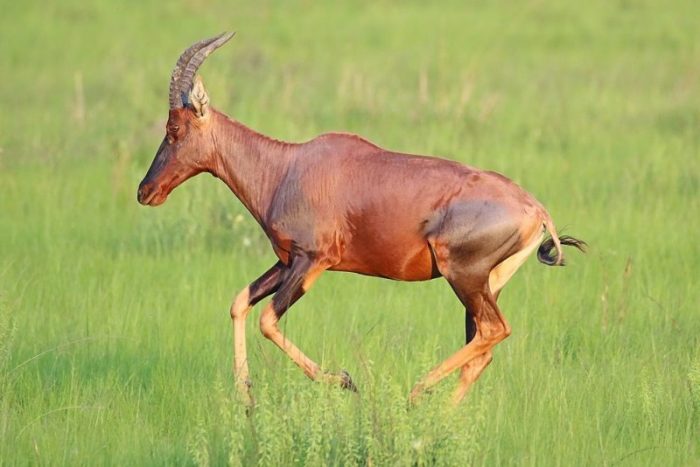
Photo: By Charles J Sharp – Own work, from Sharp Photography, sharpphotography, CC BY-SA 4.0, https://commons.wikimedia.org/w/index.php?curid=54592938
Topis are a subspecies of antelope found in the deserts and savannas of sub-Saharan Africa. Topis have long, angled horns on their heads, and they are thought to be the most socially diverse out of the different species of antelopes, at times living in large aggregations at other times small groups. Topi males create swaths of territories that are intended to attract females, and these chunks of territories can be several kilometers wide. Topi are found in Kenya, Rwanda, Burundi and Uganda among other countries.
Warthog
Warthogs are of the family Suidae and they are found in the open regions of sub-Saharan Africa. There are two distinct species of warthogs: the common warthog and the desert warthog. The common warthog is found in savannas, grasslands, and woodlands, while the desert warthog is found in the arid regions of the Horn of Africa. Warthogs subsist on a variety of foods, eating things like roots, grasses, berries, insects, eggs, and bark. Warthogs are quite tough and willing to defend their brood by attacking predators like leopards and cheetahs.




